
Knee
Knee exercises: training for your knees
Six practical exercises to combat knee pain
Exercise is fun and crucial for our well-being. But knee pain should not stop us from being active – on the contrary: the right type of training can help alleviate knee pain. Together with the developers of our Treatment App, we have compiled specific exercises that will help you train, strengthen and stabilize your knees.
Did you know...
It is a vicious circle in a way: pain can stop you from being active – but without being active, you cannot stop pain. Wear our Train supports when you carry out the following knee exercises – because we have developed them for use during movement!
But remember that, before you jump into action, you must discuss with your physician whether these exercises are suitable for you and how often you should carry them out.
Combating knee pain
The correct foot and knee positions are incredibly important for the stability of the knee joint. You must therefore make sure that your feet are hip-width apart and your toes point forward. Evenly distribute your weight over your heel and forefoot. Now contract the sole of your feet so the longitudinal arch is lifted and the inside of the foot is raised. The big toe actively presses into the floor – but be careful not to create “claw toes”! Always make sure that your knees are always slightly bent, never fully straightened. When the foot arch is raised, the kneecap automatically points over the middle toes.
Being active is the best medicine.
Even if this saying is quite old, it has never lost its significance. When it comes to knee pain, it still applies that being active is the best medicine in almost all cases. Supports can also help: our GenuTrain support achieves its therapeutic effect particularly during movement. It stabilizes the knee joint, activates the muscles and can alleviate pain. This is how it promotes faster regeneration and contributes to safe mobilization.
Exercise 1: Two-Legged Squat
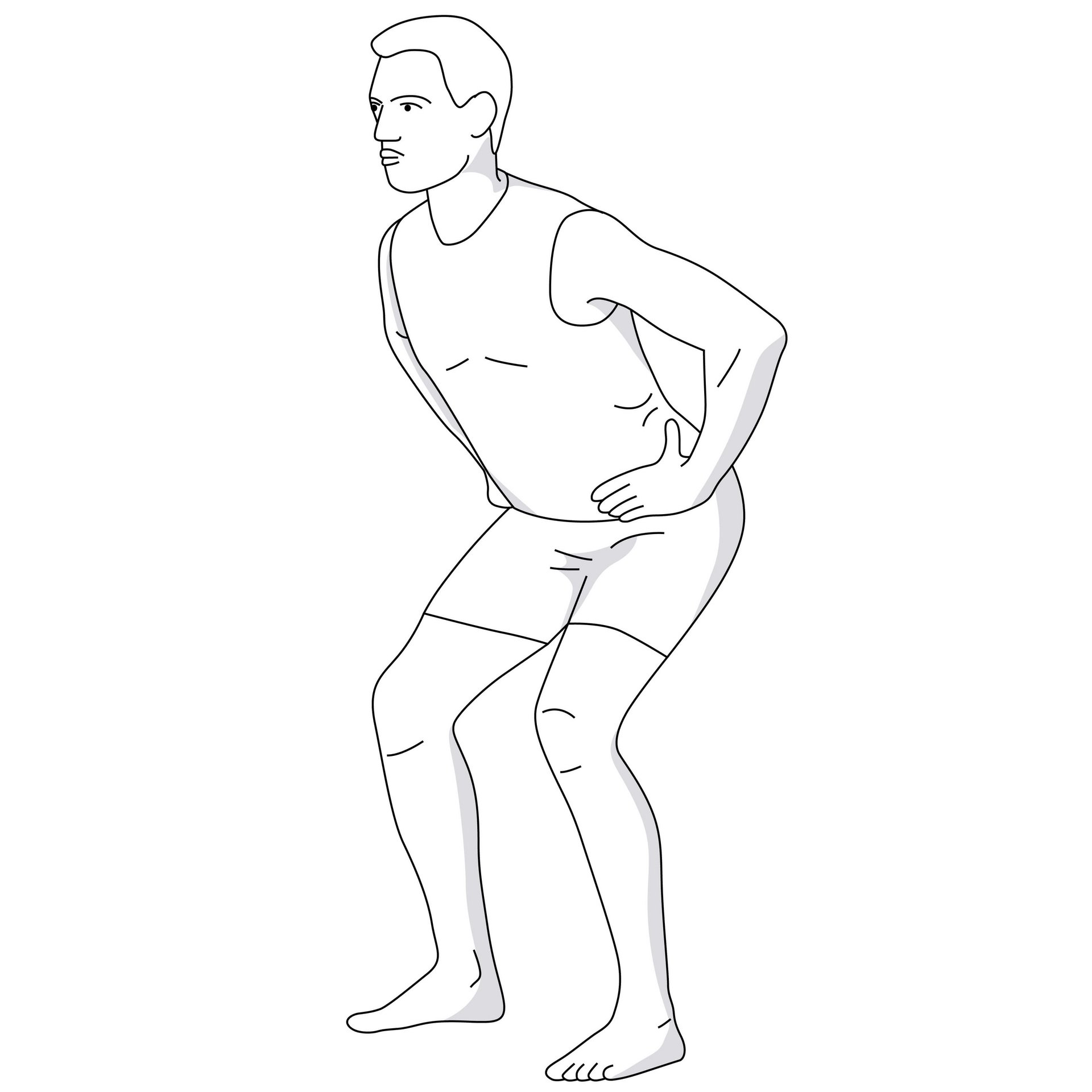
Two-legged squats simultaneously strengthen muscle chains at the front and the back. This gives your legs more stability.
- Stand with your legs hip-width apart.
- Slightly bend your knees.
- Now squat down until your knees are bent about 45 degrees.
- Keep your back straight.
- Transfer your weight from one leg to the other.
Hints:
- The deeper you squat, the harder it gets. Keep your buttocks above your knees.
- Make sure you engage both legs evenly. Try not to subconsciously go easy on the injured knee.
Exercise 2: Single Leg Stand
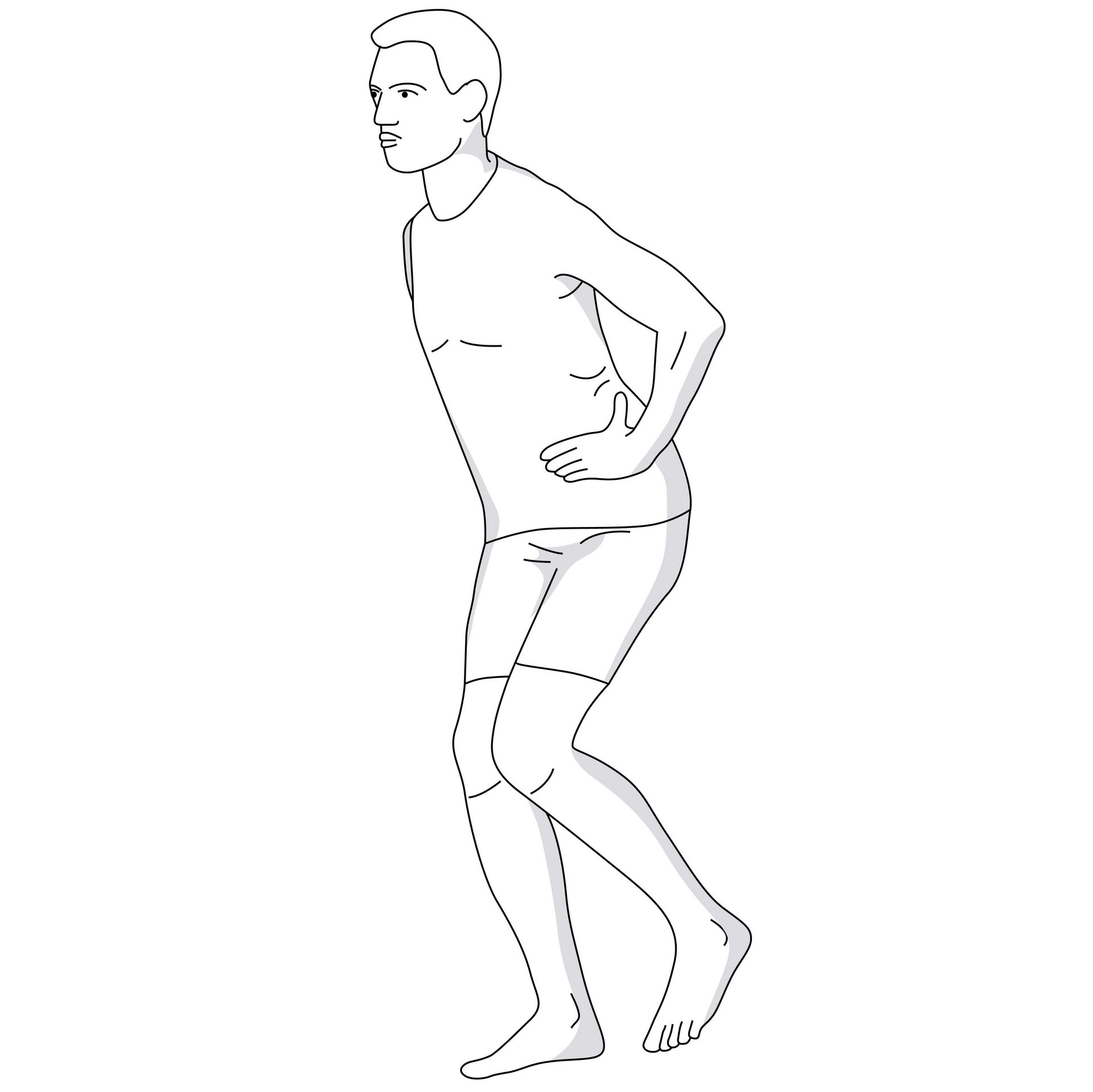
Standing on one leg improves balance and knee stability by strengthening all the leg and torso muscles.
- Stand with your feet parallel and hip-width apart.
- Slightly bend your knees and put your weight on them evenly.
- The center of your kneecap points toward the big toe.
- Lift one foot off the floor.
- Hold this position until you change sides.
Hints:
- Keep your supporting leg slightly bent.
- If you feel unsteady, hold on to a chair.
Exercise 3: Single Leg Scissor Stand
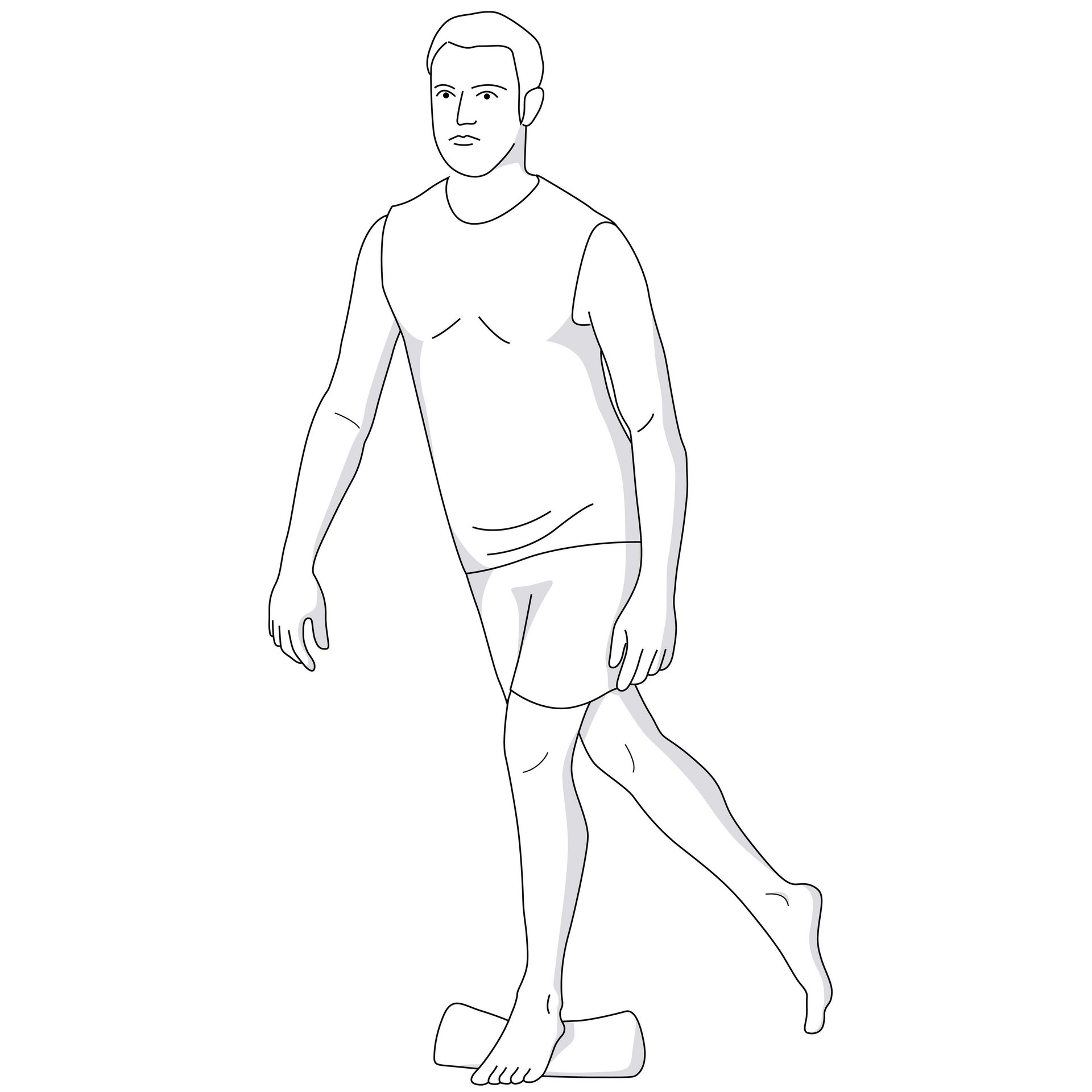
The Single Leg Scissor Stand strengthens your knee muscles. This will improve balance, coordination and responsiveness.
- Take a step forward with one leg.
- Place the front foot on a rolled-up towel.
- Slightly bend the front knee.
- Alternately take a step forward and back with the back leg. Always cross the center line before putting the foot down.
Hints:
- Point the kneecap of the supporting leg toward the big toe at all times. Keep your knee slightly bent.
- If you find standing on the rolled-up towel difficult, you can remove it.
- If the exercise is too easy, close your eyes.
Exercise 4: Backward Lunge
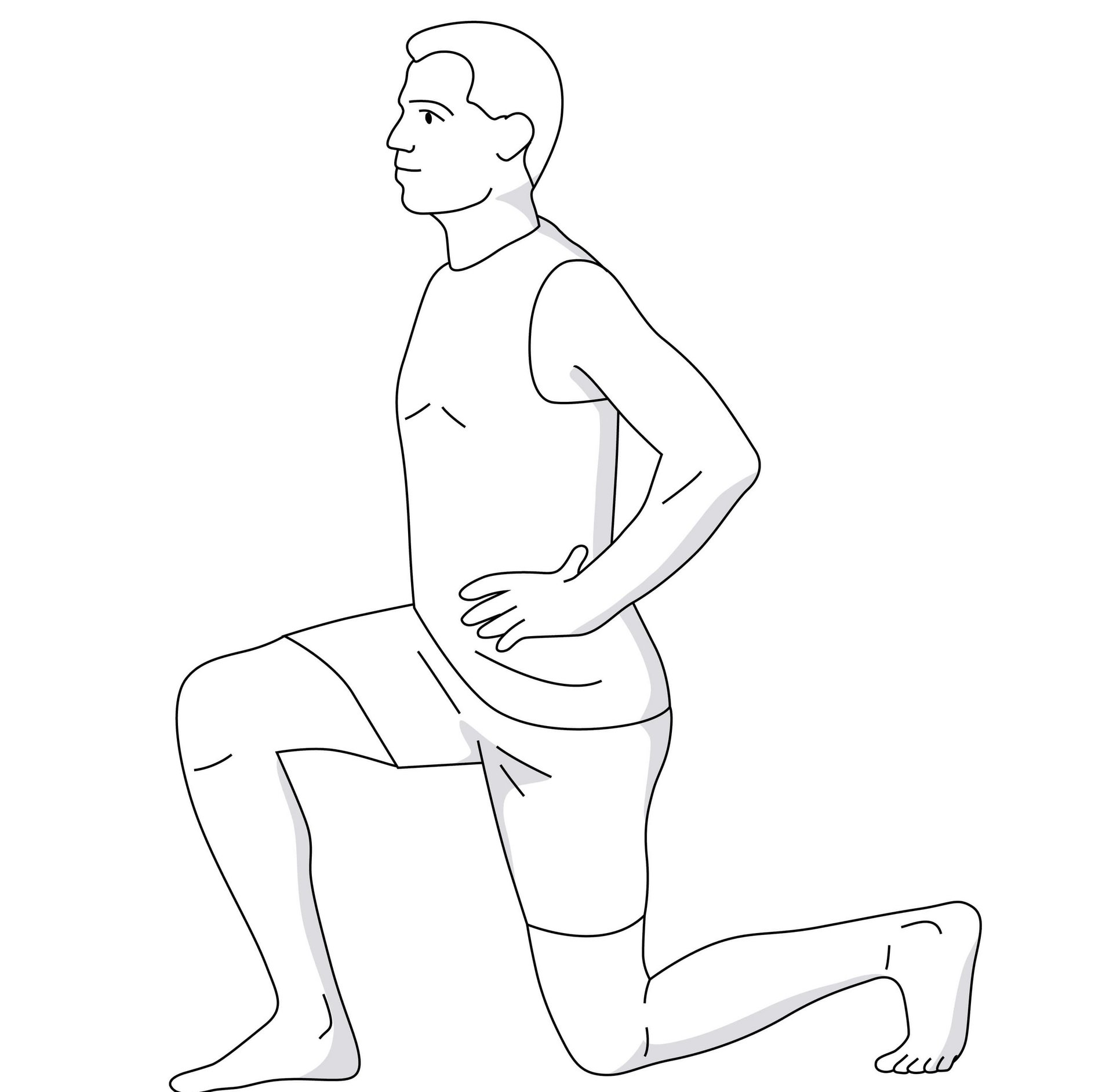
The knee requires coordination and muscle strength to keep stable. You can promote both with the Backward Lunge.
- Stand with your legs hip-width apart.
- Take a step back and lower the back knee.
- Gently touch the floor with your knee.
- Return to the starting position and repeat the movement alternately with the right and left.
Hints:
- If the exercise is too difficult, you can briefly rest your knee on the floor.
Exercise 5: Forward Lunge

The Forward Lunge activates the front thigh and hamstring muscles and improves coordination and balance.
- Stand with your feet hip-width apart, keeping your back straight.
- Take a step forward.
- Try to briefly touch the floor with the back knee.
- Return to the starting position and continue the exercise with the other leg.
Hints:
- Only go as low as feels comfortable in your knees.
- If the exercise is too difficult, you can briefly rest your knee on the floor.
Exercise 6: Five-Point
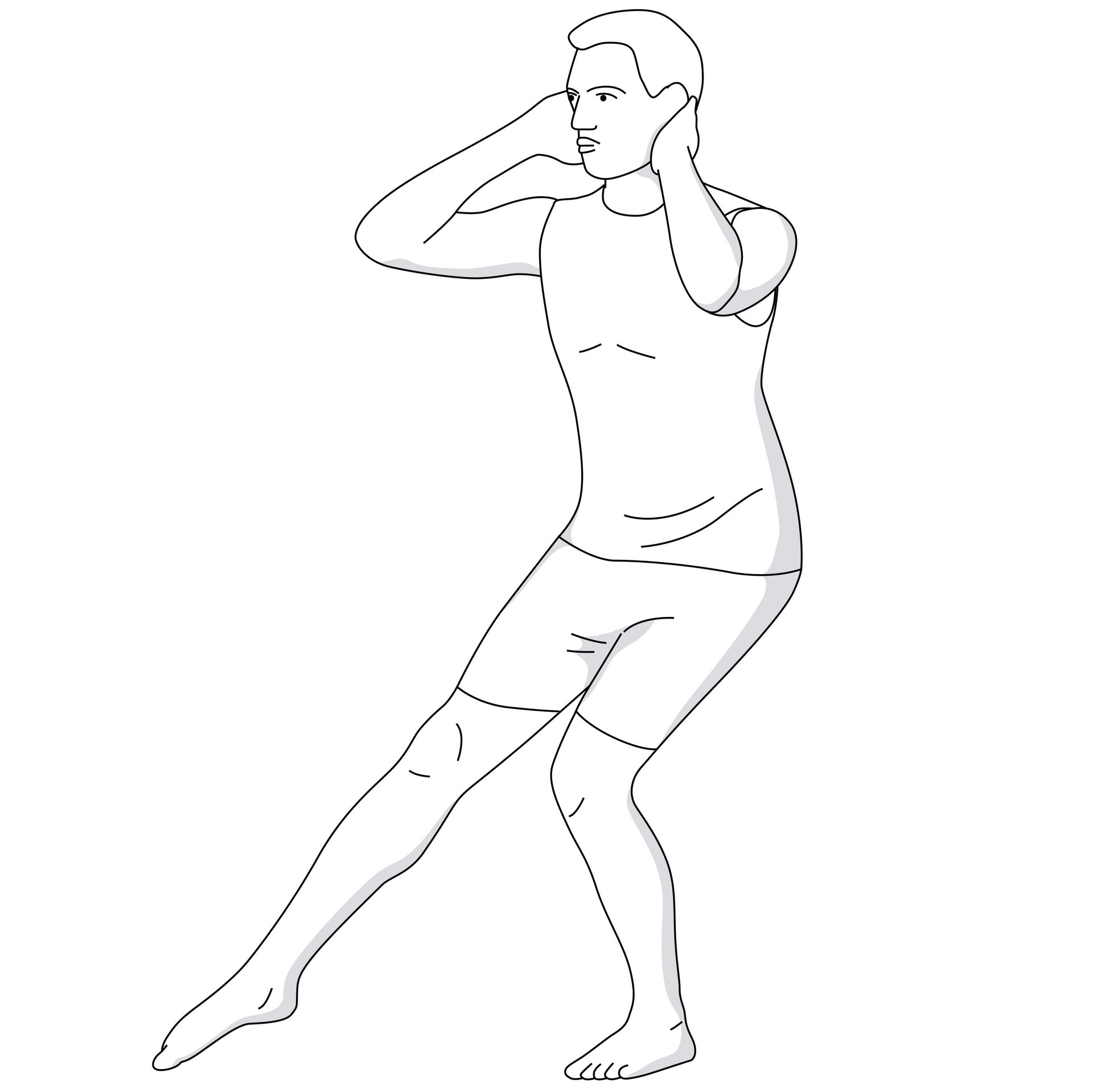
This exercise mobilizes your knees so you can stay perfectly flexible.
- Imagine a square and its corners on the floor.
- You are standing in the center of the square.
- Slightly raise your right leg.
- Put more weight on the outer edge of your left foot and slightly bend your knee.
- The tiptoes of your right foot now tap the corners of the square in a clockwise direction.
- Briefly tap your left foot after every corner before moving on.
- Keep your left knee balanced in line with your foot.
Hints:
- If the exercise is too difficult, hold on to a chair.
- The further away the corners, the harder it is to keep the supporting leg stable. So don’t make your square too big.

Movement starts with a tap
Train whenever and wherever you want!
Our aids have a pain-relieving and stabilizing effect. To further support you in getting active, we have developed the therapy app. It shows you personalized exercises to help you get moving. The app also motivates you to improve your mobility and enhance your well-being.

Would you like to know more about our Train supports and their effectiveness? Find out here how the GenuTrain can help you with your knee pain.